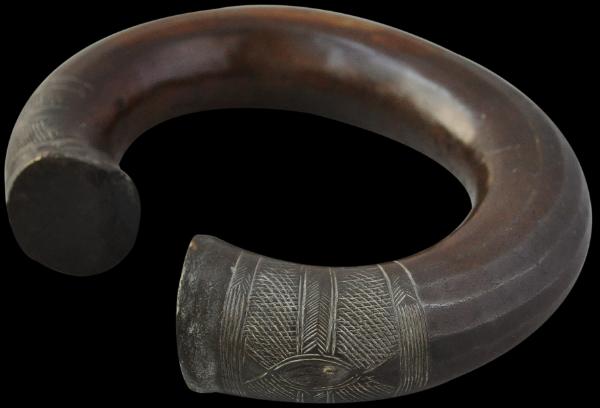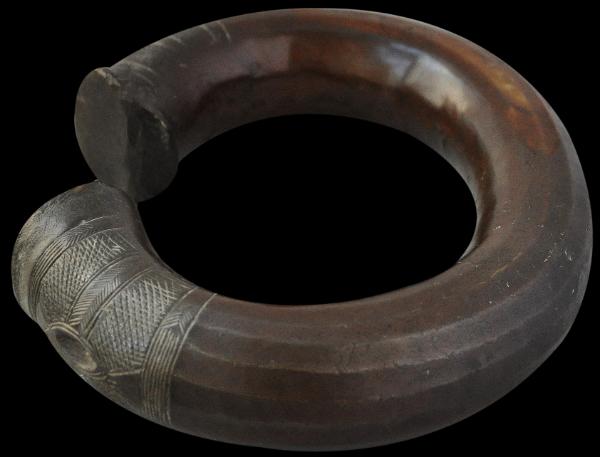
African Manilla Currency
Unusually Massive, Heavy Copper Manilla Currency
West Africa
19th century
dimensions: 22.5cm by 18cm; thickness: 4.5-5cm, weight: in excess of 5 kilogramsThis unusually large and heavy cast copper manilla appears to have been produced in Africa. Most however, were smaller and were made in Europe for export to West Africa, where they were used as a primitive form of currency.
The cross-hatched decorations on either end suggests a West African rather than a European provenance.
Large, heavy examples of manillas sometimes were referred to as ‘king’ or ‘queen’ manillas and were believed to have been used by the nobility as a store of wealth and to settle transactions for significant purchases such as land, slaves and brides.
The name manilla is said to derive from the Spanish for bracelet ‘manilla’ or the Portuguese for ‘hand-ring’. Most manillas used as currency in Nigeria and Ghana were in the form of copper or brass anklets and bracelets. The use of manilla currency in West Africa lasted until the second world war.
References
Duchâteau, A., Benin: Royal Art of Africa from the Museum für Völkerkunde Vienna, Prestel, 1994.
Inventory no.: 1592
SOLD




